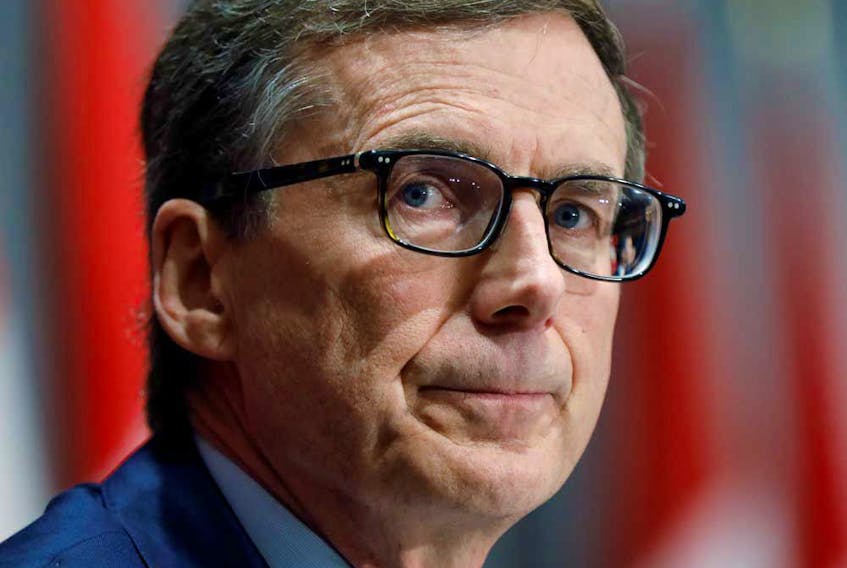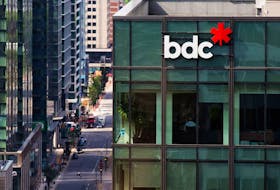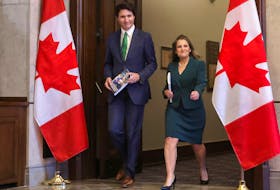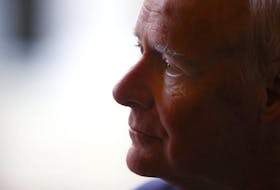Central banks pride themselves on their ability to keep their eyes on the horizon, no matter the distraction.
The Bank of Canada stayed true to that form on Sept. 9, acknowledging the rebound from the economic collapse that followed the COVID-19 lockdowns was better than expected, while sticking to its story that the recovery will ultimately be bumpy and drawn out.
“The bank continues to expect this strong reopening phase to be followed by a protracted and uneven recuperation phase, which will be heavily reliant on policy support,” the central bank said in a revised policy statement. “The pace of the recovery remains highly dependent on the path of the COVID-19 pandemic and the evolution of social distancing measures required to contain its spread.”
The strength of recent indicators had some investors wondering if the Bank of Canada might reconsider its whatever-it-takes approach to stimulus.
A couple of hours before the central bank’s latest statement, Canada Mortgage and Housing Corp. reported that contractors started work on new dwellings at a rate that would generate about 262,400 units over a year, the fastest pace since September 2007, according to Royal Bank of Canada. The figures were the latest evidence that early comparisons between the COVID crisis and the Great Depression are nonsense, since this recession will turn out to be one of the shortest ever.
But the climb back to where we were at the end of 2019 is another matter.
Tiff Macklem, Bank of Canada governor, and his deputies on the Governing Council left the benchmark lending rate at 0.25 per cent, its lowest-ever setting, and restated their commitment to purchase at least $5-billion worth of government bonds per week with newly created money, a strategy known as quantitative easing, or QE.
Those two policies form the core of the central bank’s pledge to keep borrowing costs uncommonly low until the recovery is “well underway.” The Bank of Canada is also purchasing a handful of other financial assets, including provincial debt and corporate bonds, to keep key funding markets from freezing due to the number of private buyers spooked by the crisis. The value of the central bank’s balance sheet has increased by more than 200 per cent since the end of February.
Policy-makers reiterated that the benchmark lending rate will remain pinned near zero until the central bank’s two-per-cent inflation target is “sustainably achieved,” an unusually explicit promise meant to give businesses and households confidence that they needn’t worry about a surprise jump in borrowing costs. They added that asset purchases will be “calibrated” to keep market interest rates at levels that “support the recovery and achieve the (Bank of Canada’s) inflation objective.”
The new language perhaps hints at a possible taper in the future, though there is no sign of an imminent change,
The part about calibrating QE got Bay Street’s attention, since it was substantively different enough from previous policy statement language to indicate an iteration in the central bank’s thinking. The value of the Bank of Canada’s portfolio peaked at almost $547 billion at the end of July, and had dropped to about $537 billion by the beginning of September, as some short-term assets matured and the central bank saw less need to replace them.
It’s possible the Bank of Canada wanted to let market participants know they shouldn’t be alarmed if it decides to buy fewer assets in the near future. Ben Bernanke, the former chair of the U.S. Federal Reserve, infamously induced a global panic in 2013 by innocently stating the Fed’s QE program could be tapered as economic conditions improved. Traders hadn’t been conditioned for that possibility, and their rushed buying and selling caused interest rates to spike and stock markets to plunge.
“The new language perhaps hints at a possible taper in the future, though there is no sign of an imminent change,” Simon Deeley, a strategist at RBC Dominion Securities Inc., said in a note to clients. “We continue to see any lowering of the (federal government) bond purchase level in the near term as premature.”
Ultimately, the Bank of Canada’s only job is to keep inflation around two per cent, and current readings suggest the central bank will have to let the economy run hot for a while to fulfil its mandate.
The Consumer Price Index (CPI) increased only 0.1 per cent in July from a year earlier, and the Bank of Canada’s latest projections imply it will be at least a couple of years before the economy gains enough strength to put sustained upward pressure on prices. “CPI inflation is close to zero, with downward pressure from energy prices and travel services, and is expected to remain well below target in the near term,” the statement said.
To be sure, the Bank of Canada’s forecast specialists were conservative in July when they helped their bosses construct a “central scenario” of how Canada’s economy might recover from an epic collapse. The summer Monetary Policy Report assumed that gross domestic product free fell at an annual rate of 43 per cent in the second quarter, and would rebound at a rate of about 31 per cent in the third quarter.
GDP actually dropped at an annual rate of about 39 per cent between April and June, Statistics Canada reported on Aug. 28. The extraordinary level of government support for households appears to have offset a significant amount of the immediate damage resulting from effectively closing the economy for most of the spring. That should mean a stronger “reopening” phase as lockdown measures were eased heading into the summer.
The Bank of Nova Scotia’s “nowcast,” which estimates the current quarter’s growth rate by assembling key indicators in real time, suggests the economy is currently growing at an annual rate of about 49 per cent, significantly better than the central bank’s July estimate.
Few, if any, economists expect that pace will be sustained. Aid programs are scheduled to be reduced or ended during the autumn and elevated levels of joblessness and bankruptcies will dent the economy’s ability to generate wealth. The virus will continue to weigh on confidence until a vaccine is discovered and produced at scale.
“While recent data during the reopening phase is encouraging, the bank continues to expect the recuperation phase to be slow and choppy as the economy copes with ongoing uncertainty and structural challenges,” policy-makers said.
•Email: [email protected] | CarmichaelKevin
Copyright Postmedia Network Inc., 2020








